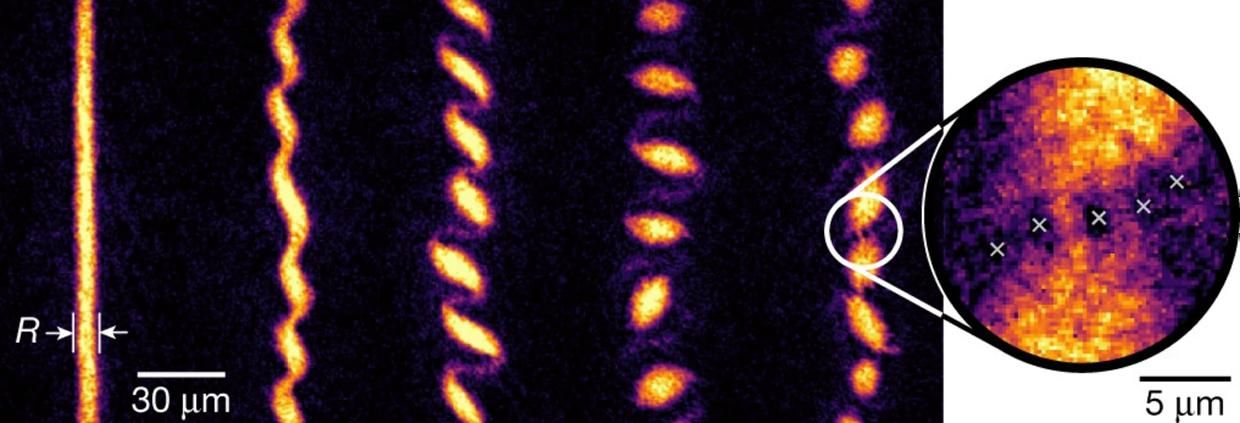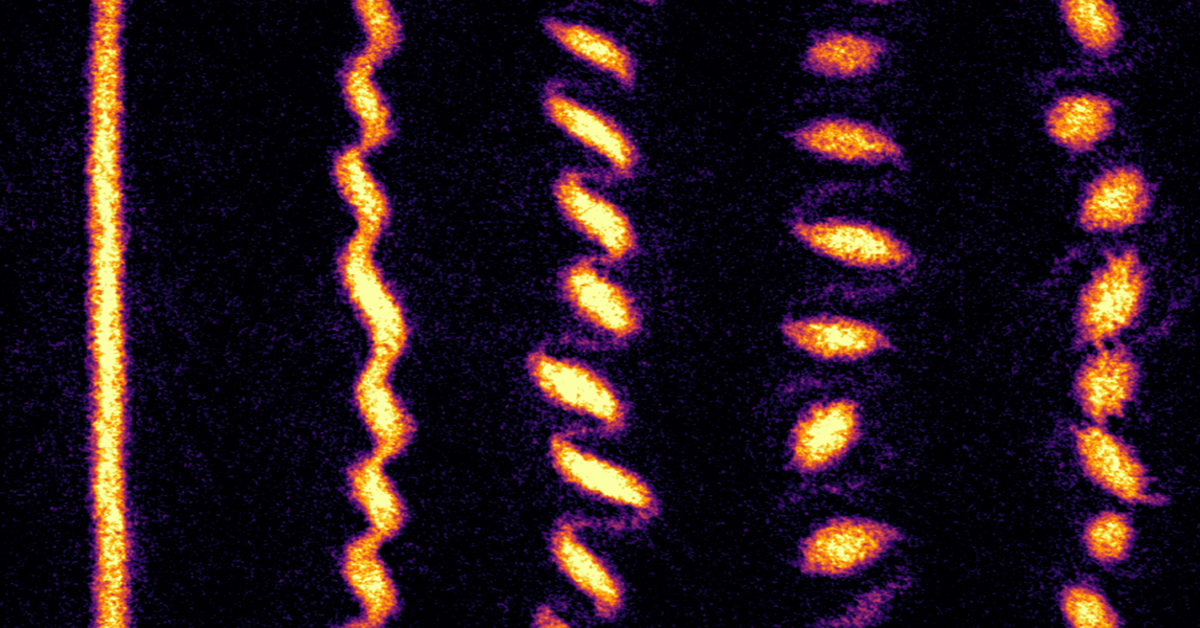The Universe is governed by two sets of apparently irreconcilable laws of physics. The workings of the world you and I perceive are underpinned by classical physics. How we move and how fast we’re going are all determined by the classical assumption that we can only exist in one place at any one moment in time.
However, in the realm of quantum physics, things get freaky. Particles don’t have a fixed location like you and the things around you. Instead, the behaviour of individual atoms is governed by the principle that a particle’s location is a mere probability. The typical rules of physics don’t apply: an atom has a chance of being in two locations at once.
When particles interact this way—ensuing the consequence of these quantum effects—peculiar manifestations should appear. These observations are educated guesses made by physicists – directly witnessing such purely quantum mechanical phenomena of interacting particles amid the overwhelming noise of the classical world is far from a walk in the park.
But in a recent development, physicists from the Massachusetts Institute of Technology (MIT) have for the first time observed the moment atoms transition from their classical state to quantum, as they form captivating “quantum tornadoes”—a striking and exciting glimpse into the quantum world.
Storm Chasers: Quantum edition.
Published in Nature, the MIT physicists rapidly rotated a quantum fluid of ultracold atoms. Doing so allows them to overcome the frustrating limitations of the world of classical physics, where the onslaught of interferences make it impossible to study these fragile classical-quantum interactions. Freezing the atoms, right down to a fraction above absolute zero, amplifies the quantum effects and creates a state of matter called a Bose-Einstein condensate (BEC). In particular, this state of matter can exhibit exotic quantum properties on a larger, much more visible scale.
Placing the cloud of ultracold atoms in an electromagnetic trap, the team spun them round and round at about 100 rotations per second. The initially round cloud of atoms first deformed into a thin, needle-like structure. Then came the point when classical effects diminished, in which quantum laws started to kick in and dominate the ultracold atom’s behaviour. After the effects of quantum mechanics took over, the needles spontaneously broke into a crystalline pattern, resembling the string of tiny quantum tornadoes, as shown in the image above.
And voila, the researchers obtained the first direct documentation of a rapidly-rotating quantum Hall fluid evolving from its initial classical state and stepping into the spooky world of quantum. In quantum Hall fluids, clouds of electrons float in magnetic fields. Instead of repelling each other and forming a crystal, particles in the field behave in accordance with their neighbours in a correlated, quantum manner. In this research, the physicists used a million ultracold sodium atoms in their quantum Hall BEC.
More than photogenic.
This strange yet intriguing phenomenon could have some interesting implications for classical and quantum mechanics.

A quantum gas appears first as an elongated rod (left). As it rotates, it becomes helical, then it breaks up into quantum tornadoes, each a swirling mass. Between the blobs tiny vortices appear (the X marks in the inset) in a regularly repeating series. Photo credits: MIT/Nature
“This evolution connects to the idea of how a butterfly in China create a storm here [in the United States], due to instabilities that set off turbulence,” explains Professor Martin Zwierlein, who led the study. “Here, we have quantum weather: The fluid, just from its quantum instabilities, fragments into this crystalline structure of smaller cloud and vortices. And it’s a breakthrough to be able to see these quantum effects directly.”
Apart from how fascinating they look, these quantum tornadoes might have practical applications. After all, the project is partly funded by DARPA, the agency responsible for the invention of the internet, mRNA technology, GPS and many more.
DARPA hopes to use a ring of quantum tornadoes as highly sensitive rotation sensors for submarines. A submarine in stealth mode uses a fibre optic gyroscope to detect slight rotational movement. Light travels in both one way and the other in the fibre, and if the entire thing is spinning, you should get an interference pattern. But swapping photons for atoms drives up the efficiency as atoms move much slower. Yet another interesting use case, a quantum-tornado-enabled sensor could also measure minute changes in the Earth’s rotation—an ingenious method to study the influence of the Earth’s core on its environment.




































